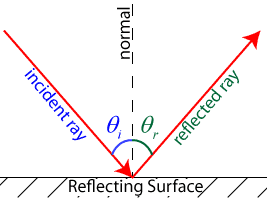Agenda:
d-t and v-t graphs
http://www.theuniverseandmore.com
Homework:
1) Complete reading pp. 30-42, Qs 9-11, 13-17 today
Then students worked through World 1 of http://www.theuniverseandmore.com
Agenda:
d-t and v-t graphs
http://www.theuniverseandmore.com
Homework:
1) Complete reading pp. 30-42, Qs 9-11, 13-17 today
Then students worked through World 1 of http://www.theuniverseandmore.com
The speed limit on Cooper Road in front of the high school is 35 mph (15.6 m/s, or 56.3 km/hr). As part of an Irondequoit Police Department safety project, your team has been asked to gather data about the speeds of cars driving down Cooper Road.
You will be broken up into groups of 5 students and provided stopwatches and a tape measure. Each group will then be given 10 minutes to plan their strategy before heading outside to set up. Once outside, you will be given 10 minutes to implement your measuring strategy and perform any "practice runs" you find necessary. After that time, the project coordinator (aka instructor) will signal your group to begin.
When the signal is given, your group is to measure the speed of the next 10 vehicles driving north on Cooper Road. Each vehicle’s description should be recorded (blue van, license plate #, etc.) as well as data that will allow you to obtain at least two measurements of the vehicle’s speed.
Following data acquisition, teams will return to the classroom to analyze their data and create a professional one-page report for the police commissioner.
Reports should include:
1) An introductory paragraph describing the problem and project.
2) A detailed step-by-step procedure explaining what your group did, with enough detail that a knowledgeable person could repeat your work and obtain similar results.
3) A table detailing each vehicle’s description and its average speed.
4) A calculation showing the average speed of all 10 vehicles.
5) A graph showing each vehicle’s speed compared to the speed limit (choose most appropriate graph to convey information efficiently).
6) A conclusion (two paragraphs). The first paragraph should summarize your results and include recommendations for improving your work if you were to engage in a more detailed analysis. This paragraph should compare your group’s results to the results obtained by the instructor using the radar gun. Discuss any discrepancies. The second paragraph should answer the question "is there a speeding problem on Cooper Road." Support this topic sentence with two or three supporting sentences, and a concluding sentence.
Post your report on the APlusPhysics.com forums in the section labeled "Lab Meetings." Print out a copy of your report (printer 3033), write everyone’s name on the top, and place in the INBOX.
When a wave hits a boundary, three different events can occur. The wave may be:

The law of reflection states that the angle at which a wave strikes a reflective medium (the angle of incidence, or ![]() ) is equal to the angle at which a wave reflects off the medium (the angle of reflection, or
) is equal to the angle at which a wave reflects off the medium (the angle of reflection, or ![]() ). Put more simply,
). Put more simply, ![]() . In all cases, the angle of incidence and the angle of reflection are measured from a line perpendicular, or normal, to the reflecting surface.
. In all cases, the angle of incidence and the angle of reflection are measured from a line perpendicular, or normal, to the reflecting surface.
Although all waves can exhibit these behaviors, electromagnetic light waves are typically considered for demonstration purposes. When a wave bounces off a reflective surface, the nature of its reflection depends largely on the nature of the surface. Rough surfaces tend to reflect light in a variety of directions in a process known as diffuse reflection. Diffuse reflection is the type of reflection typically observed off of pieces of paper. Smooth surfaces tend to reflect light waves in a more regular fashion, such that the reflected rays maintain parallel reflected rays. This process is known as specular reflection, and is commonly observed in mirrors.
Question: The diagram represents a light ray reflecting from a plane mirror. Find the angle of reflection for the light ray.
Answer: The angle of reflection must be 25°, since the angle of incidence is 25° (note that angles are always measured from the normal!)
Review Problems
Key Points:
The velocity of a wave depends upon its medium.
The frequency of a wave determines its nature and remains constant from medium to medium.